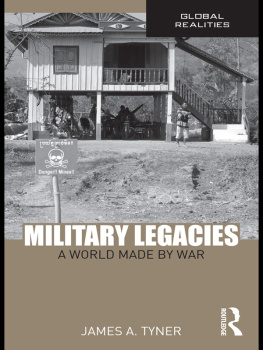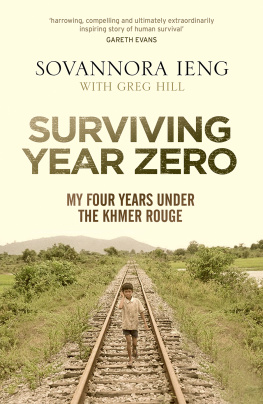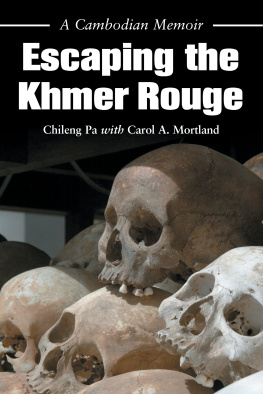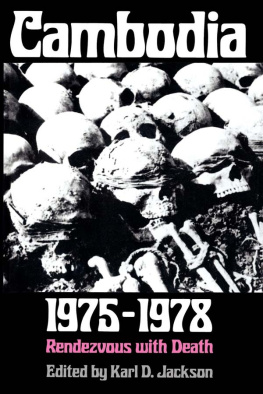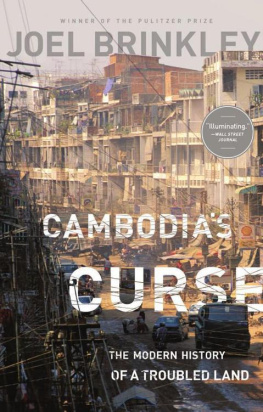THE NATURE OF REVOLUTION
The Nature of Revolution
ART AND POLITICS UNDER THE KHMER ROUGE
James A. Tyner

2019 by the University of Georgia Press
Athens, Georgia 30602
www.ugapress.org
All rights reserved
Designed by Erin Kirk New
Set in Chapparal Pro by Graphic Composition, Inc. Bogart, GA.
Most University of Georgia Press titles are
available from popular e-book vendors.
Printed digitally
Library of Congress Cataloging-in-Publication Data
Names: Tyner, James A., 1966 author.
Title: The nature of revolution : art and politics under the Khmer Rouge / James A. Tyner.
Description: Athens : University of Georgia Press, [2019] | Includes bibliographical references and index.
Identifiers: LCCN 2018020211| ISBN 9780820354392 (hardback : alk. paper) | ISBN 9780820354385 (ebook)
Subjects: LCSH: Communism and artCambodia. | ArtPolitical aspectsCambodia. | Parti communiste du Kampuchea.
Classification: LCC HX521 .T96 2019 | DDC 959.604/2dc23 LC record available at https://lccn.loc.gov/2018020211
CONTENTS
FIGURES
ACKNOWLEDGMENTS
Leon Trotsky wrote that art must make its own way and by its own means. For Trotsky, art is not something to be imposed or dictated. Rather, art comes from within; it is something felt, something that needs expression. Art cannot be contained; art is emancipatory. And it is this liberating potential that cuts across the grain of politics; and it is for this reason that governments have long sought to harness the freedom offered by artworks and artists.
I did not set out to write this book, but this book materialized nonetheless. My hope has long been to contribute something to our understanding of the political economy of Democratic Kampuchea and how a Marxist critique of the Communist Party of Kampuchea may help clarify the geographies of the Cambodian genocide. But in the process, a stark contradiction haunted my work, a disconnect that resonated with scholarship on the Holocaust and other moments of horror: How could the Khmer Rouge write poetry when so many men, women, and children were dying? A simple answer is that the so-called poems, songs, and so forth were not really art, or perhaps these productions could be dismissed as nothing more than pieces of propaganda. My search for answers resulted in this book.
The research for and publication of this book was a collective effort, an intellectual journey I shared with many others. Primary thanks are extended to Mick Gusinde-Duffy and the entire staff at the University of Georgia Press, who guided the manuscript from initial proposal submission through final production. Special thanks are extended also to the editorial board at the University of Georgia Press and the anonymous reviewers who provided critical feedback. At Kent State University, I express my appreciation to Jim Blank, Todd Diacon, Marcello Fantoni, Mandy Munro-Stasiuk, and Scott Sheridan, for their continued backing of my research. Kent State University has provided an exceptionally supportive environment, and I am deeply grateful for the productive working environment provided by these individuals. In Cambodia I am indebted to the support and assistance of Youk Chhang and the staff at the Documentation Center of Cambodia. The center has been extremely generous in providing documents and photographs for this project and others over the years. More specifically, however, I thank Dara Vanthan and Phirun Suon for their assistance in obtaining permissions for the photographs used in this book. Special thanks are also extended to Sokvisal Kimsroy, Chhunly Chhay, Savina Sirik, and Kok-Chhay Ly for their input and insight and for their translation of documents.
Over the years, I have benefited immeasurably from frank discussions, critical feedback, and pointed comments from my students: Gabriela Brindis Alvarez, Sutapa Chattopadhyay, Chhunly Chhay, Alex Colucci, Gordon Cromley, Christabel Devadoss, Kathryn Hannum, Sam Henkin, Josh Inwood, Sokvisal Kimsroy, Robert Kruse, Kok-Chhay Ly, Mark Rhodes, Stian Rice, Savina Sirik, Dave Stasiuk, Rachel Will, and Chris Willer. I have been truly blessed to work with and learn from them all. I have also drawn inspiration from and have been challenged in my thinking through conversations with some very remarkable scholars over the years, including Stuart Aitken, Derek Alderman, Caroline Bennet, Stphanie Banzaquen-Gautier, Noel Castree, Kevin Cox, Thom Davies, Michael Dear, Randle DeFalco, Khamboly Dy, Craig Etcheson, Alice Evans, Julie Fleischman, Colin Flint, Jim Glassman, Michelle Hamers, David Hassler, Rachel Hughes, Helen Jarvis, Ben Kiernan, Caroline Laurent, Andrew Mertha, Don Mitchell, Richard Peet, Anne-Laure Pore, Curt Roseman, Vicente Snchez-Biosca, Ian Shaw, Simon Springer, Sarah Williams, and Melissa Wright.
Portions of this book have appeared in previous publications, and I am thankful for the opportunity to use and expand on this material. is based on Landscape Photography, Geographic Education, and Nation-Building in Democratic Kampuchea, 19751979 (Geographical Review 105 no. 4:56680), coauthored with Sokvisal Kimsroy and Savina Sirik.
As always, I thank my stalwart companion, Bond, my now seventeen-year-old puppy. My daughters, Jessica and Anica, continue to show me whats important in life. And thanks go to Belinda, my partner, for her unwavering support. I thank also my parents, Dr. Gerald Tyner and Dr. Judith Tyner, for their encouragement. Last, I would like to acknowledge my brother, David Tyner. My brother is an accomplished artist and graphic designer; more precisely, though, my brother has often expressed his political commitments and sense of social justice through his artwork. Over the years, dreams have gone unrealized, but his struggles have been a source of inspiration for me. Always, I have appreciated the power of art through him. To my brother, I dedicate this book.
THE NATURE OF REVOLUTION
INTRODUCTION
Between April 1975 and January 1979, the Communist Party of Kampuchea (CPK), also known as the Khmer Rouge, carried out a program of mass violence that led to the deaths of approximately two million people: between one-quarter and one-third of Cambodias pre-1975 population. Victims succumbed to extreme exhaustion, disease, starvation, torture, murder, and execution as a direct consequence of CPK policies that sought to liberate Cambodia from historical foreign influences, abolish private property and currency, and establish a new society under a Communist-inspired vision of collective ownership.
The broad coordinates of the Cambodian genocide are well documented. Once in power, the CPK mobilized the entire country: cities and towns were evacuated, their inhabitants forcibly relocated to agricultural communes. Work teams were established along military lines as men, women, and children were tasked with growing rice, building irrigation systems, and clearing forests. Education, marriage, religion, and other social institutions were either eliminated or transformed to align with the political philosophy of the Khmer Rouge, namely, strict loyalty to the regime and revolution.
The reintroduction of certain social practices is less acknowledged, but it is through an engagement with these practices that the coordinates of the genocide were established. Upon seizing power, the Khmer Rouge enjoyed neither widespread support nor trust among the citizenry of Cambodia. For the top leadership, this posed only a contradiction to be resolved. Reflecting its Marxist-Leninist roots, the CPK viewed itself as a vanguard of Khmer society and thus understood its immediate role as one of revolutionary mentor. Consequently, the CPK needed to articulate a vision of its newly established country, renamed Democratic Kampuchea. This geopolitical vision was conveyed through numerous artistic means, including poetry, song, dance, and photography.
Next page

